Snakes are already unusual due to their elongated and limbless anatomy. Yet even among these slithering serpents are snakes that are so unusual, they deserve a moment in the limelight. There are snakes all over the world, but let’s hone our search on discovering the 10 most unusual snakes in America.

There are different characteristics that go into making something unusual. They range from appearance to diet, but they all have something about them that separates them from the status quo.
What are the 10 most unusual snakes in America? We’ll analyze some details about some of the snakes that live in the United States.
10. Louisiana Pine Snake
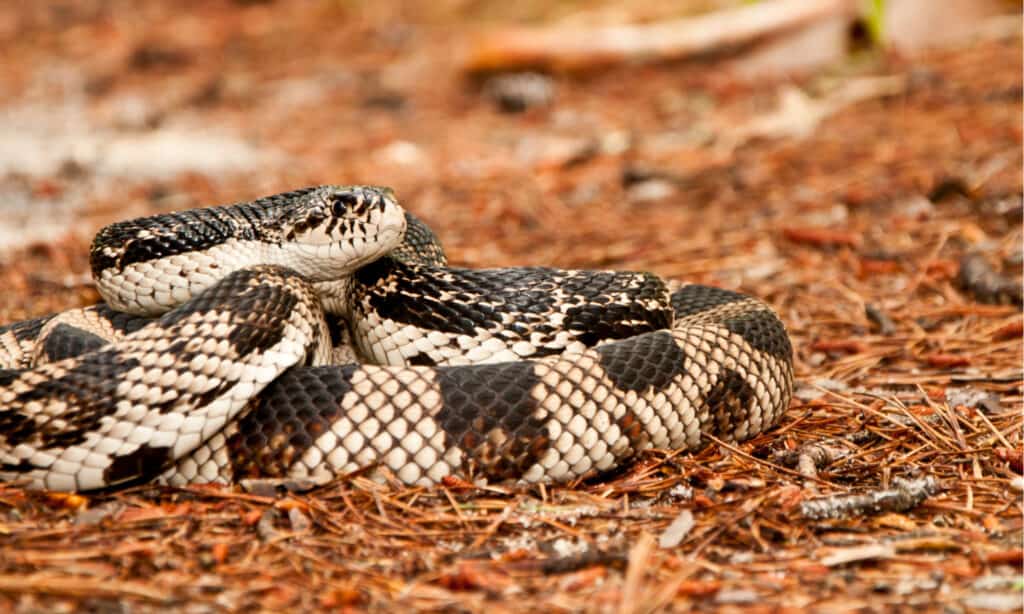
A
pine snake
from the genus Pituophis. Unfortunately, the Louisiana pine snake is the rarest snake in America.
©Jay Ondreicka/Shutterstock.com
It’s unusual to be the rarest but this snake is it. The Louisiana pine snake is the rarest snake in the United States with 200 or so individuals still in the wild. It lives in eastern Texas and Louisiana.
The snake is now displaced due to the loss of pine forests. The Memphis zoo has been hard at work preserving these snakes and has now reintroduced over one hundred snakes back into their natural habitat.
9. Copperhead Snake

Copperhead venom may help find a cure for cancer.
©iStock.com/David Kenny
Copperheads are venomous pit vipers that live in the southern and eastern United States. Their venom is being used in studies with the goal to cure cancer because of its tumor-shrinking abilities. Who knew something as dangerous as venom could have healing properties? It’s an unusual consideration.
8. Rosy Boa
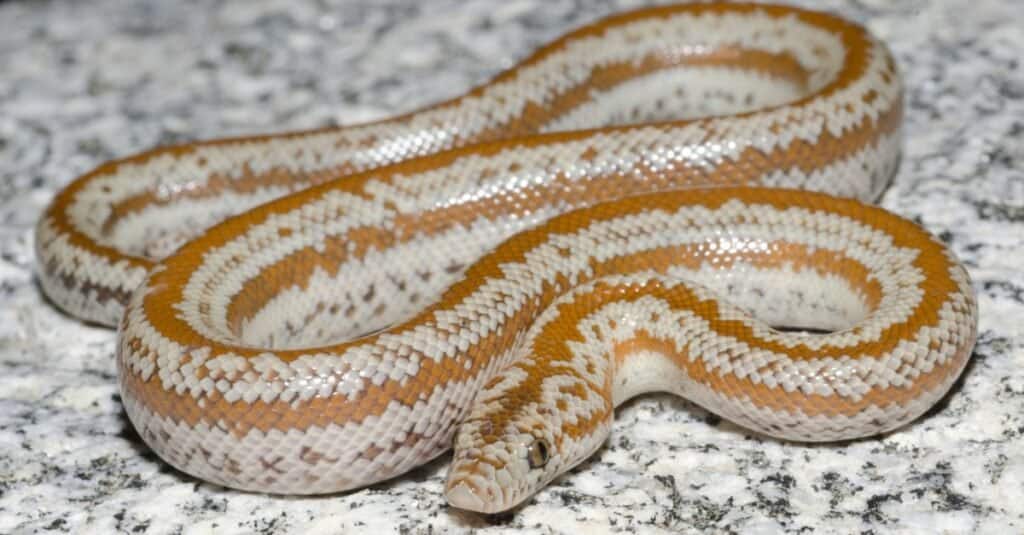
Rosy boas are the slowest snake on the planet.
©Jason Mintzer/Shutterstock.com
The rosy boa is unusually slow. It’s so slow that it’s one of the slowest snakes on the planet. It’s found in the American Southwest and it’s one of two boas that’s native to the USA. The rosy boa grows up to 3.5 feet in length.
They’re so slow that there’s no way they could pursue prey. All they can do is lie in wait and ambush their target.
These snakes like hiding in rocks and live solely in the desert. They’re mostly nocturnal, though they come out at any time of day, and they hibernate in the winter.
They’ll also get underground during the hottest months in the desert to conserve moisture. When it rains, they come out of hiding in abundance.
Rosy boas are a popular pet to keep because they’re excellent for beginners and look so unusually good.
7. Hognose Snake
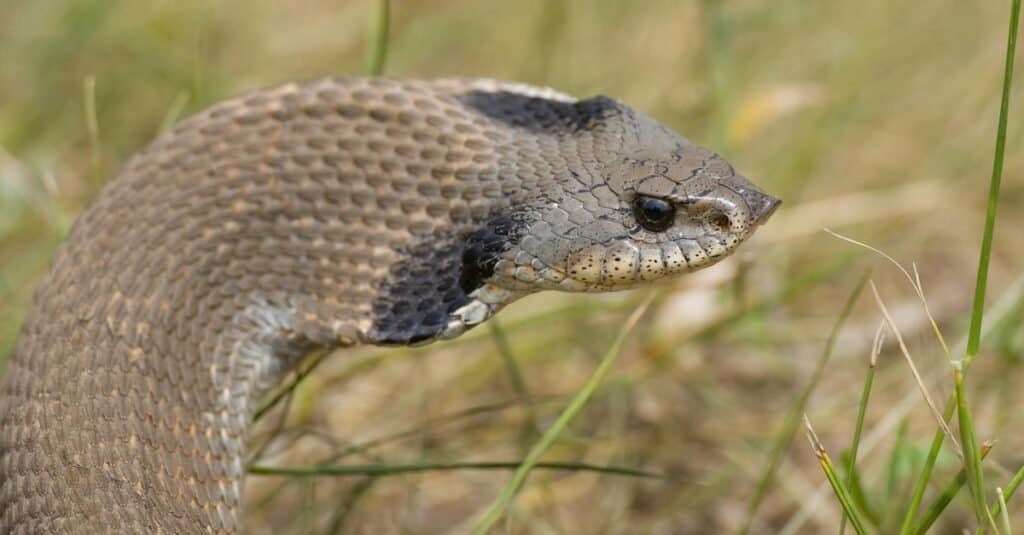
The hognose snake’s pig nose is the result of its rostral.
©Steve Oehlenschlager/Shutterstock.com
The hognose snake is endemic to North America with ranges mostly inside of the USA. There are three species in America, the western hognose, eastern hognose, and southern hognose snakes. Their most prominent feature is their piggy snout on the end of their nose. This is created by a protruding scale called the rostral that’s meant to aid them in foraging and hunting.
Not only are hognose snakes unusual because of their nose scale, but their mild venom is also a point of debate. Some say it’s venom, while others say it’s not because of how it’s administered.
A hognose snake has two fangs in the back of its mouth instead of the front. It does not inject venom with its two back fangs but rather pierces the prey. This allows their toxic saliva to enter through the wound and kill the animal.
Since the saliva is applied topically by the tooth instead of being injected, some people think this snake is poisonous instead of venomous. It’s unusual for a snake to have fangs in the back of its mouth let alone poisonous spit.
Either way, the venom is almost entirely harmless for humans.
6. Ringneck Snake
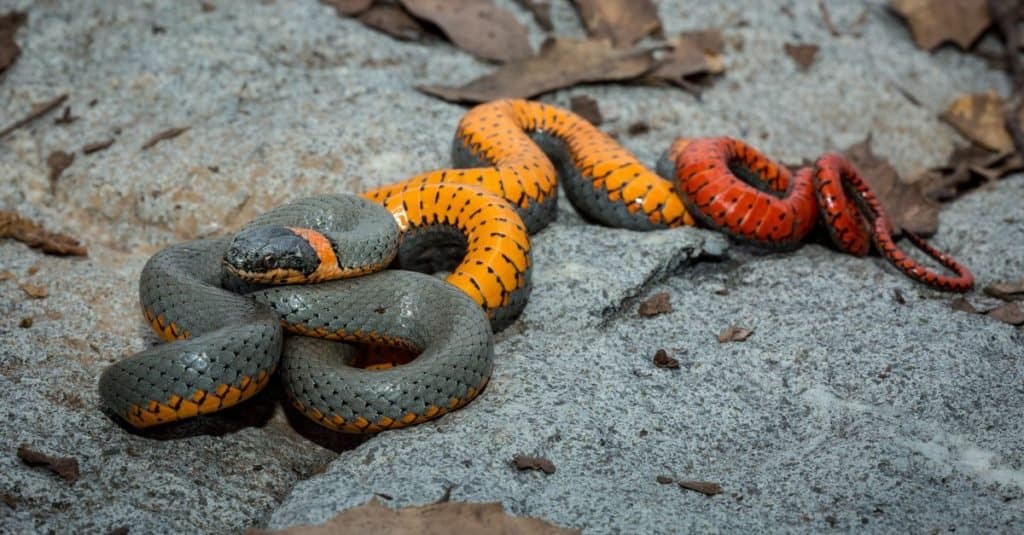
Ringneck snakes can make great pets.
©Michael K. McDermott/Shutterstock.com
The ringneck snake is striking in appearance and is nonvenomous. Like the hognose snake, this snake also has poisonous saliva that it delivers to its prey through back fangs. Its bite isn’t something that humans should worry about as its mouth is too small to bite. If it does get you, its fangs just feel like a bee sting.
It is also one of the smallest snakes out there. They only get 2.5 feet long at max, but they generally only grow to less than a foot in length. They have a lot more predators and aren’t apex predators like some of the other snakes in the USA.
They make great pets because they tolerate being handled and they’re so small and pretty. Their main diet of earthworms and insects is also easy to manage.
Being small, pretty, and having poisonous spit makes you unusual.
5. Eastern Indigo Snake
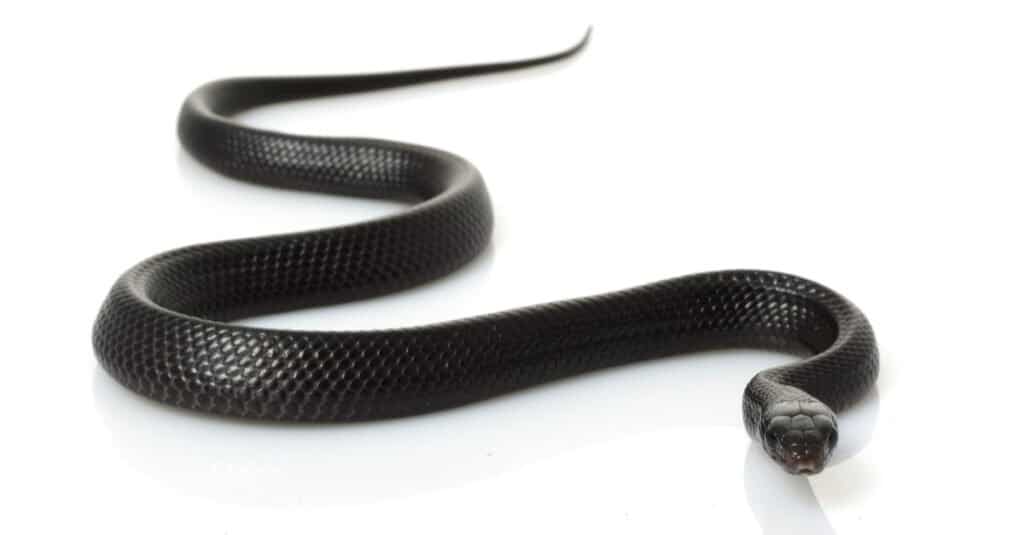
The indigo snake may be immune to rattlesnake venom.
©fivespots/Shutterstock.com
The indigo snake makes it onto our list due to its size, tapping out at a whopping 9 feet. The eastern indigo snake exists in Mississippi, Georgia, Florida, and Alabama, though the loss of habitat has pushed them mainly into Florida.
Indigo snakes are nonvenomous and have a glossed black quality to them. They overpower their prey with force. They like to hang out near the water and prefer humidity.
Just because they’re nonvenomous doesn’t mean they don’t have a problem chowing down on some of their venomous counterparts. It’s believed they might be immune to rattlesnake venom as a rattlesnake is also on an indigo snake’s menu.
4. Sidewinder Rattlesnake
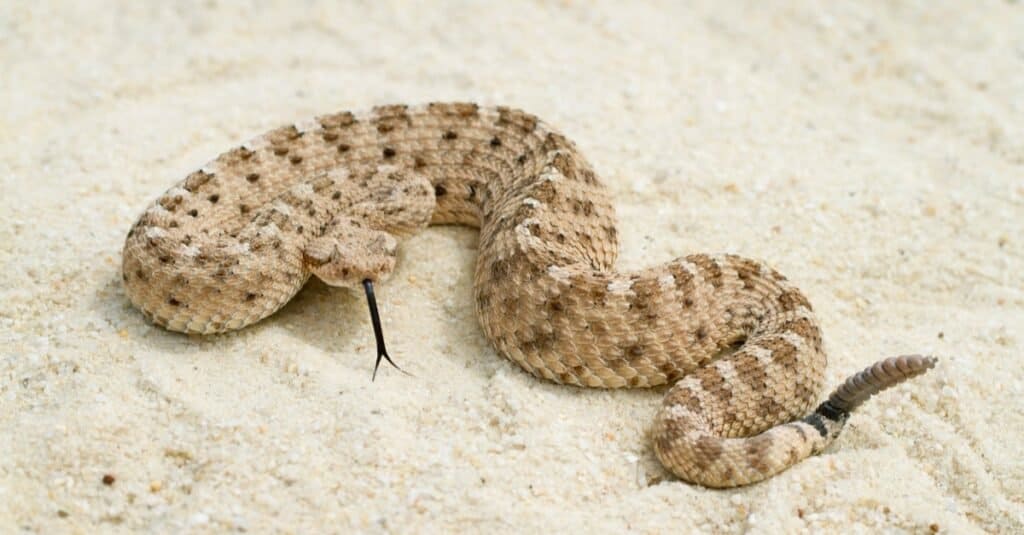
Sidewinder
rattlesnakes
are the fastest snakes in the world.
©Mark_Kostich/Shutterstock.com
Also called the horned rattlesnake, the sidewinder rattlesnake lives in the Sonoran and Mojave deserts. They grow to be as big as 2.5 feet, so they’re not very big.
It has supraocular scales, which are scales above the eye. These are probably to help keep sand out of their eyes as they hang out buried in it. It gives them horns, which is one of their unusual traits.
The sidewinder rattlesnake is a venomous pit viper with amazing speed. It can cruise through the southwest desert dunes going at speeds up to 18 mph. This makes the sidewinder rattlesnake the fastest snake in the world.
The fastest snake in the world with horns? That’s unusual.
3. American Queen Snake
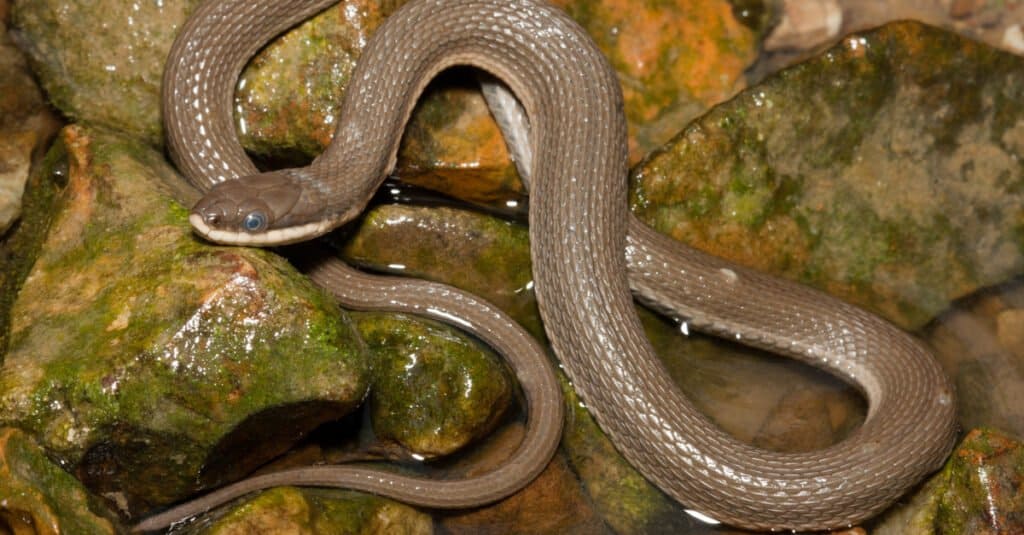
The American queen snake’s main diet is molted crayfish.
©Nathan A Shepard/Shutterstock.com
The American queen snake eats almost nothing but freshly molted crayfish, an unusual snake attribute. They do this because the crayfish can’t strike back when they’re shedding. There aren’t many other snakes out there that are as picky as an American queen snake.
This snake lives east of the Mississippi in temperate climates from Florida north through Ontario, Canada. The area they live in must be conducive to the capture and consumption of crayfish as they are 90% of their diet.
2. Scaleless Corn Snake
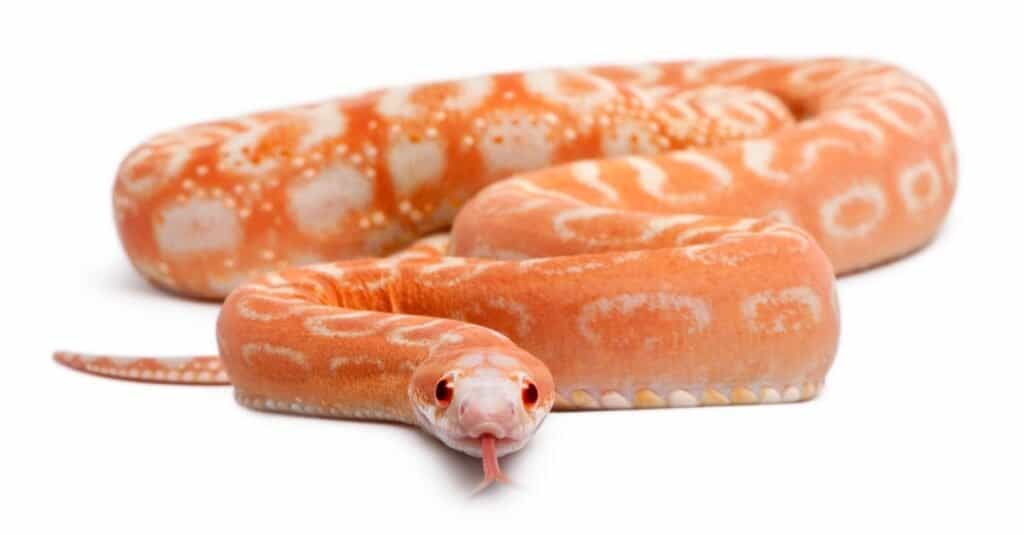
The scaleless corn snake does have some scales.
©iStock.com/GlobalP
The scaleless corn snake doesn’t appear often in the wild, though it can be found on the same scale as other snakes or humans with albinism. While its name implies that it’s free of scales, that’s not entirely true as it may have splotches of scales and its underbelly is scaled.
Most of these snakes come around through the breeding of individuals in captivity. They’re definitely one of the coolest-looking snakes, even if their body composition isn’t conducive to living in the wild.
1. Rainbow Snake
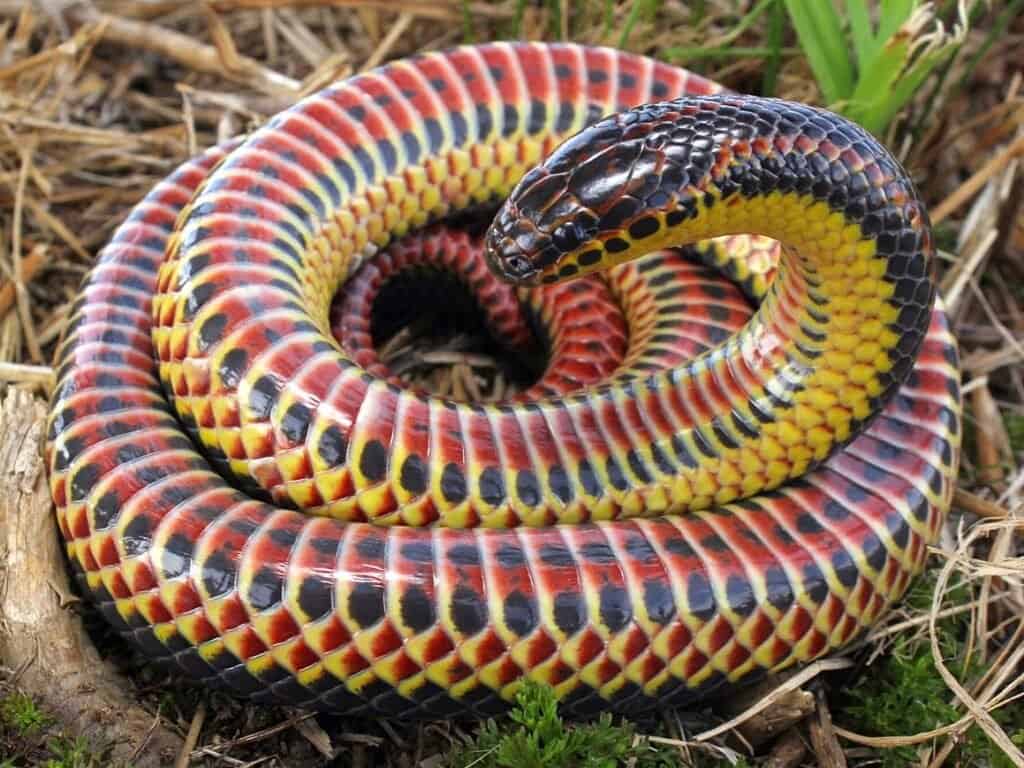
Rainbow snakes thrive in brackish and freshwater environments.
©Charles Baker / CC BY-SA 4.0 – License
Located in the southeastern United States, the rainbow snake is number one on our list because it’s so beautiful. It is also known as an eel moccasin, and it is nonvenomous.
They can grow up to five and a quarter feet long, and they live in aquatic environments although they do need land. There used to be two kinds of these snakes, but one went extinct. Their tail comes to a point, which it uses to probe around for its dinner.
Rainbow snakes grow on average up to 4 feet. You’ll hardly ever spot them because they like to keep to themselves. They mostly prey on eels, though they’ll also chow down on salamanders, tadpoles, and frogs.
They’re great swimmers, and they’re not aggressive when handled properly. They’re capable of thriving in freshwater and in brackish environments. They don’t sun themselves, so it’s really hard to spot these snakes in the wild.
| Name | Special Feature | Location |
|---|---|---|
| Rainbow Snake | Rainbow colors and beauty. | Southeastern United States |
| Scaleless Corn Snake | Lack of scales, although it has some. | Southeastern United States |
| American Queen Snake | Diet: eats only molted crayfish. | East of the Mississippi River from Florida to Canada |
| Sidewinder Rattlesnake | Fastest snake in the world. | Sonoran and Mojave deserts. |
| Eastern Indigo Snake | Size: up to 9 feet. | Primarily Florida, but also Georgia, Alabama, and Mississippi. |
| Ringneck Snake | Smallest; multi-colored; a pet. | Widespread. |
| Hognose Snake | Piggy snout. | Widespread. |
| Rosy Boa | Slowest; a pet. | Southwestern United States |
| Copperhead | Venom can shrink tumors. | Southern and Eastern United States |
| Louisiana Pine Snake | Rarest | Louisiana and East Texas. |
The photo featured at the top of this post is © iStock.com/GlobalP
Discover the "Monster" Snake 5X Bigger than an Anaconda
Every day A-Z Animals sends out some of the most incredible facts in the world from our free newsletter. Want to discover the 10 most beautiful snakes in the world, a "snake island" where you're never more than 3 feet from danger, or a "monster" snake 5X larger than an anaconda? Then sign up right now and you'll start receiving our daily newsletter absolutely free.
FAQs (Frequently Asked Questions)
What unusual snakes have gone extinct
We noted there used to be two kinds of rainbow snakes. The kind that went extinct is the South Florida rainbow snake. It was last spotted in 1952 and the Fish and Wildlife Service declared it extinct in 2011.
Thank you for reading! Have some feedback for us? Contact the AZ Animals editorial team.






